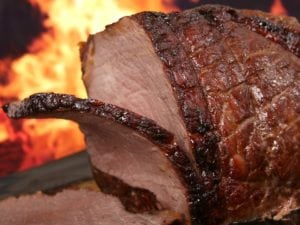You cook strictly according to the recipe, you observe all-all proportions, but the result is still far from the ideal? Do not worry! It’s not about you at all.
There are some secrets that add flavor and piquancy to each dish. If you know these secrets, then your dishes will be just superb!

Image credit: 089photoshootings
So, you initially spoil the taste of your food, if …
… keep all the food in the fridge
Not all food is well tolerated by cold. Tomatoes, onions, garlic, potatoes, kiwi and mango, and zucchini and eggplant are much better in the heat. By removing these products in the refrigerator, you do not prolong their life, but, rather, they spoil.
… constantly turning the food over
Do not overturn the prepared dish too often, otherwise you will get leaked juice from the meat, breadcrumbs and muffled cereal instead of cheese cakes. Leave the future culinary masterpiece alone and do not disturb it too often. Here is one of the main principles of a good cook.
… fry the meat in a non-stick frying pan

Image credit: Security
Yes, yes, non-stick pans are the enemy of crisp crusts! Such dishes are heated less than usual. So leave it, for example, for omelets, pancakes and pancakes. And for meat use a frying pan.
… badly salt water for pasta

Image credit: RitaE
It’s good to salt water, in which pasta is cooked this is the golden rule of a good pasta. Otherwise, as a result, you risk getting a tasteless mass, which no sauce will save. If you can not figure out the proportions, here’s the landmark: one tablespoon of salt for 300 g of pasta.
… roasting in olive oil
With a strong heating, olive oil loses all its useful properties and begins to burn. And this in turn completely ruins the taste of the whole dish. So leave olive oil for salads. For frying, use sunflower and preferably refined.
… measure out bulk products with a glass
Many of us measure the amount of ingredients for the dough with a conventional glass, while forgetting that it contains a different amount of loose and liquid products. But it is very important for baking to strictly observe the proportions. Therefore, if you do not remember all the tables of measures and scales by heart, it is better to use a special measuring cup or kitchen scale.
… not enough to heat the pan
A well-heated frying pan is necessary when frying vegetables and creating the crispy crust on meat. So do not rush to put food in a frying pan right away. Experienced cooks assure that if you think that the frying pan is already hot enough, then wait another couple of minutes, and only then start cooking.
… overcooking the garlic

Image credit: ajcespedes
In garlic contains much less water than in other vegetables, so it burns very quickly and can give dishes an unpleasant caustic flavor. Therefore, the chefs say for no reason that the garlic should be put in a frying pan for a couple of minutes, and then cleaned, or even added at the end of cooking.
… put the meat from the refrigerator right into the frying pan
To avoid an unpleasant situation, when everything is ready outside, and inside the piece is still damp, be sure to bring the meat to bring to room temperature before you start to cook it. So it will warm up more evenly, and you will evenly fry a piece. This, by the way, also applies to baking in the oven.
… do not let the meat “rest” after cooking

Image credit: Meditations
Even if you usually can not wait to try a prepared dish, in the case of meat it’s best to wait a couple of minutes before cutting it. So all the juices will be distributed more evenly, and the taste will become more saturated.
